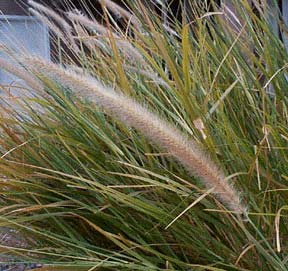PCA Alien Plant Working Group (original) (raw)

- Photographic List
- Complete List
- Annual bastard-cabbage
- Amur corktree
- Asiatic colubrina
- Asiatic sand sedge
- Australian pine
- Black locust
- Black swallow-wort
- Burma reed
- Bush honeysuckles (exotic)
- Canada thistle
- Carrotwood
- Chinaberry
- Chinese lespedeza
- Chinese wisteria
- Climbing euonymus
- Cogon grass
- Common buckthorn
- Common mullein
- Common reed
- English ivy
- Eurasian watermilfoil
- Fig buttercup
- Fire tree
- Fiveleaf akebia
- Fountain grass
- Garlic mustard
- Goutweed
- Giant reed
- Japanese barberry
- Japanese hop
- Japanese honeysuckle
- Japanese knotweed
- Japanese spiraea
- Japanese stiltgrass
- Japanese wisteria
- Kudzu
- Leafy spurge
- Melaleuca
- Mile-a-minute
- Multiflora rose
- Musk thistle
- Oriental bittersweet
- Pale swallow-wort
- Paper mulberry
- Perennial pepperweed
- Porcelainberry
- Princess tree
- Purple loosestrife
- Russian-olive
- Salt cedar
- Siberian elm
- Silk tree
- Smooth cordgrass
- Spotted knapweed
- Strawberry guava
- Tall fescue
- Tree-of-heaven
- Velvet tree
- West Indian marsh grass
- White poplar
- Wineberry
- Yellow Himalayan raspberry
- Yellow starthistle
- Aquatics
- Herbaceous Plants
- Annual bastard-cabbage
- Asiatic sand sedge
- Burma reed
- Canada thistle
- Cogon grass
- Chinese lespedeza
- Common mullein
- Common reed
- Eurasian watermilfoil
- Fig buttercup
- Fountain grass
- Garlic mustard
- Goutweed
- Giant reed
- Japanese knotweed
- Japanese stiltgrass
- Leafy spurge
- Musk thistle
- Perennial pepperweed
- Purple loosestrife
- Smooth cordgrass
- Spotted knapweed
- Tall fescue
- West Indian marsh grass
- Yellow starthistle
- Shrubs
- Trees
- Vines
 NATIVE RANGE
Northern Africa
NATIVE RANGE
Northern Africa
DESCRIPTION Fountain grass is an attractive perennial grass with a densely clumped growth form and erect stems that grow 2 to 3 feet high. The small flowers of fountain grass are grouped in pink or purple, bristly, upright inflorescences 6-15 inches long. Fruits are small, dry achenes adorned with long showy bristles.
ECOLOGICAL THREAT Fountain grass is a highly aggressive, fire- adapted colonizer that readily outcompetes native plants and rapidly reestablishes after burning. In Hawaii, where it alters the natural fire regime, fountain grass is a major threat to some critically imperiled plant species and natural communities. Fountain grass raises fuel loads, which increases the intensity and spread of a fire, and results in severe damage to native, dry forest species adapted to less extreme fire regimes.
 DISTRIBUTION IN THE UNITED STATES
Fountain grass is found in Arizona, California, Colorado, Hawaii, Florida, Louisiana, and Tennessee. In the Hawaiian islands, it is found on the islands of Kauai, Oahu, Lanai, and Hawaii.
DISTRIBUTION IN THE UNITED STATES
Fountain grass is found in Arizona, California, Colorado, Hawaii, Florida, Louisiana, and Tennessee. In the Hawaiian islands, it is found on the islands of Kauai, Oahu, Lanai, and Hawaii.
HABITAT IN THE UNITED STATES In Hawaii, fountain grass invades many types of natural areas, from bare lava flows to rangelands. It has a wide elevational range but is limited to areas with a median annual rainfall of less than 50 inches. In southern California, fountain grass invades grasslands, deserts, canyons and roadsides.
BACKGROUND First collected in Hawaii in 1914, fountain grass has been introduced to many parts of the world as an ornamental grass. It is a poor pasture grass and a serious weed in many dry habitats.
BIOLOGY & SPREAD Fountain grass is a perennial plant with primarily wind-dispersed seeds that may remain viable in the soil for six years or longer. Its seeds may be dispersed greater distances by water, vehicles, livestock and humans.
MANAGEMENT OPTIONS The long-lived seeds of fountain grass make its control extremely difficult. Small infestations may be managed by uprooting plants by hand and destroying the inflorescences in order to prevent seed dispersal. Removal by hand may need to be repeated several times per year. Extensive infestations of fountain grass are probably best controlled with the help of herbicides, especially those with some systemic activity.
USE PESTICIDES WISELY: ALWAYS READ THE ENTIRE PESTICIDE LABEL CAREFULLY, FOLLOW ALL MIXING AND APPLICATION INSTRUCTIONS AND WEAR ALL RECOMMENDED PERSONAL PROTECTIVE GEAR AND CLOTHING. CONTACT YOUR STATE DEPARTMENT OF AGRICULTURE FOR ANY ADDITIONAL PESTICIDE USE REQUIREMENTS, RESTRICTIONS OR RECOMMENDATIONS.
NOTICE: MENTION OF PESTICIDE PRODUCTS ON THIS WEB SITE DOES NOT CONSTITUTE ENDORSEMENT OF ANY MATERIAL.
OTHER LINKS
AUTHOR Nancy Benton, The Nature Conservancy, Arlington, VA
PHOTO Arnold A. Peterson, U.S. National Park Service, Death Valley National Park, CA
REFERENCES Cronk, Q.C.B. and Fuller, J. 1995. Plant Invaders: The Threat to Natural Ecosystems. Chapman & Hall: London. World Wide Fund for Nature.
Swearingen, J. 2009. WeedUS Database of Plants Invading Natural Areas in the United States: Fountain Grass (Pennisetum setaceum). http://www.invasive.org/weedus/subject.html?sub=6165\.
Tunison, J.T. 1992. Fountain grass control in Hawaii Volcanoes National Park: Management considerations and strategies. In C.P. Stone, C.W. Smith, and J.T. Tunison (eds.), Alien Plant Invasions in Native Ecosystems of Hawai`i: Management and Research. Univ. Hawaii Coop. Natl. Park Resour. Studies Unit. Univ. Hawaii Press, Honolulu.
USDA, NRCS. 2009. The PLANTS Database (http://plants.usda.gov). National Plant Data Center, Baton Rouge, LA 70874-4490 USA.
Plant Conservation Alliance, Alien Plant Working Group.